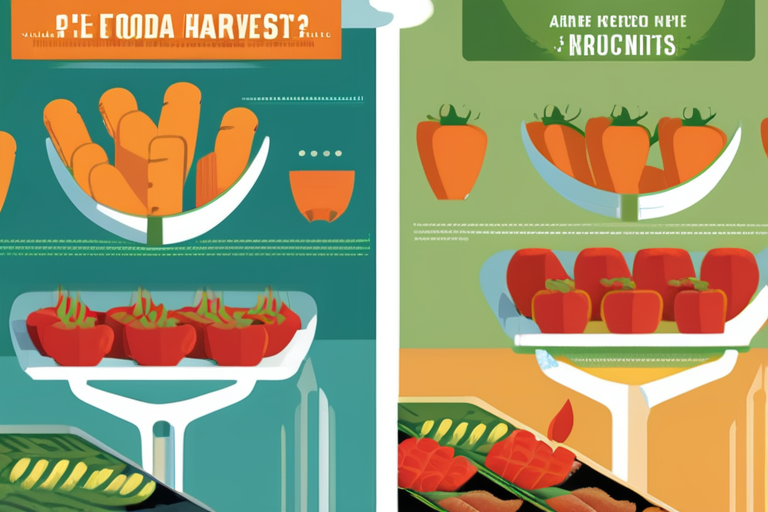Record Harvests Make Famines Far Rarer, But Hunger Persists
The world has made significant progress in reducing famine, with record harvests of food crops being produced globally. According to the Food and Agriculture Organization (FAO), global cereal production reached a new high in 2024, surpassing previous records by 2.5%. This achievement is attributed to advances in agricultural technology, improved farming practices, and increased investment in rural development.
Despite this progress, hunger remains a persistent issue worldwide. The FAO estimates that over 820 million people suffer from hunger globally, with many more experiencing food insecurity. "We've made tremendous progress against famine, but hunger hasn't disappeared," said Bryan Walsh, senior editorial director at Vox and author of the book on existential risk.
The Irish Hunger Memorial in New York City serves as a poignant reminder of the devastating effects of famine. The memorial, which features a collection of stones, soil, and moss arranged to resemble a landscape, honors the victims of Ireland's Great Famine, which occurred from 1845 to 1852. "It's a powerful symbol of the human cost of hunger," said Walsh.
The reasons for this disparity between record harvests and persistent hunger are complex. One major factor is food waste, with an estimated one-third of all food produced globally being lost or wasted. This waste occurs at various stages, from production to consumption, and is often due to inefficient supply chains, inadequate storage facilities, and consumer behavior.
Another significant challenge is the unequal distribution of food resources. Many countries struggle to access nutritious food due to poverty, conflict, and climate change. "Food security is not just about producing enough food; it's also about ensuring that everyone has access to it," said Maria Altamirano, a senior policy analyst at the World Food Programme.
In recent years, efforts have been made to address these issues through initiatives such as the Sustainable Development Goals (SDGs), which aim to end hunger and ensure food security by 2030. Governments, international organizations, and civil society groups are working together to implement policies and programs that promote sustainable agriculture, reduce waste, and improve access to nutritious food.
While progress has been made, much work remains to be done. The FAO estimates that an additional $30 billion is needed annually to achieve the SDGs related to hunger and nutrition. "We need to continue investing in agricultural development, social protection programs, and climate resilience initiatives," said Altamirano.
As the world continues to grapple with the challenges of food security, it's essential to recognize both the progress made and the work still ahead. By understanding the complexities of this issue and working together, we can strive towards a future where no one has to suffer from hunger.
Background:
The FAO estimates that global cereal production reached 2.5 billion metric tons in 2024.
Over 820 million people suffer from hunger globally, according to the FAO.
Food waste is estimated to account for one-third of all food produced globally.
Additional Perspectives:
"We need to prioritize sustainable agriculture practices and reduce our reliance on chemical fertilizers and pesticides," said Dr. Jane Goodall, renowned primatologist and conservationist.
"Climate change is a major driver of hunger, and we must address it through climate-resilient agriculture and adaptation strategies," said Dr. Robert Watson, former chair of the Intergovernmental Panel on Climate Change.
Current Status:
The FAO reports that global cereal production continues to increase, with record harvests expected in 2025.
Efforts are underway to address food waste through initiatives such as reducing packaging and promoting "ugly" produce.
International organizations and governments continue to work together to implement policies and programs aimed at achieving the SDGs related to hunger and nutrition.
*Reporting by Vox.*



 Hoppi
Hoppi

 Hoppi
Hoppi

 Hoppi
Hoppi

 Hoppi
Hoppi
 Hoppi
Hoppi

 Hoppi
Hoppi










